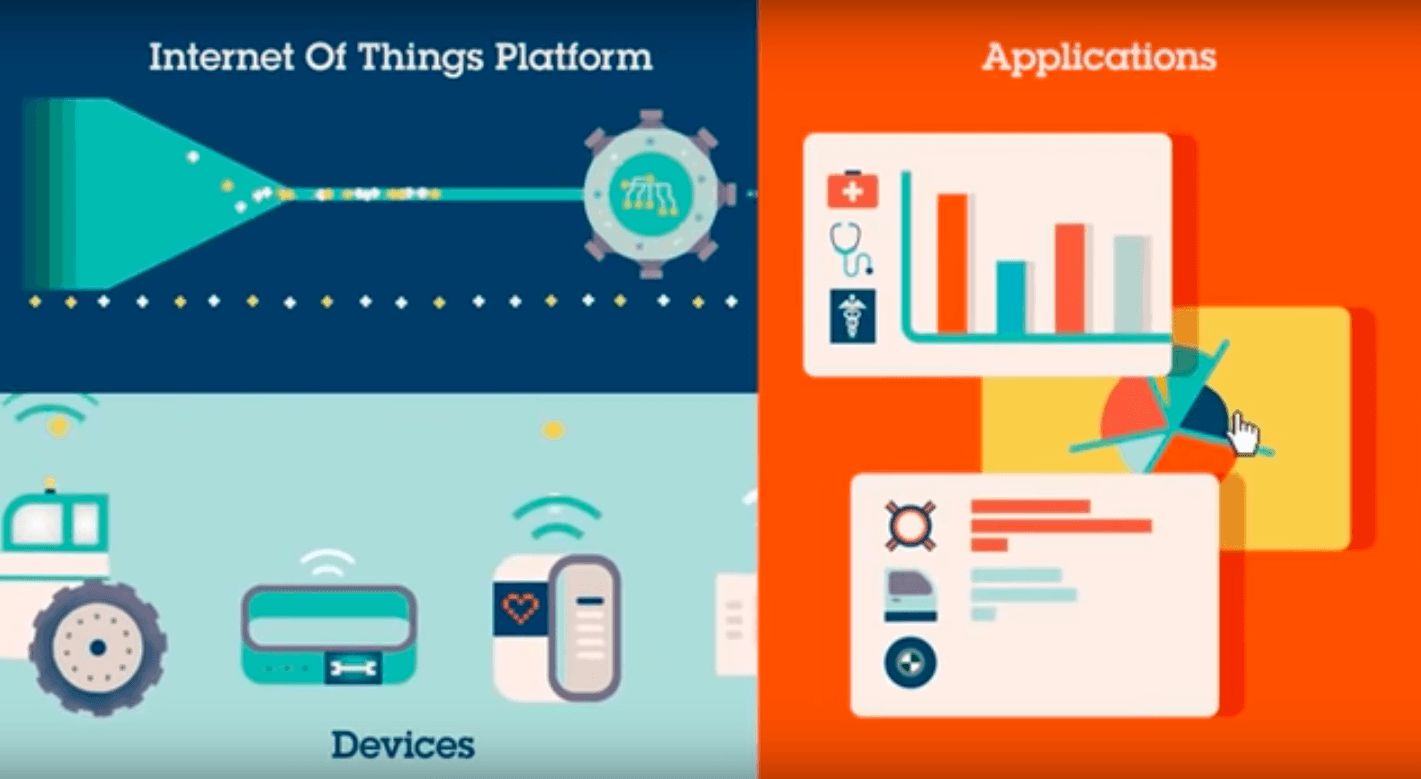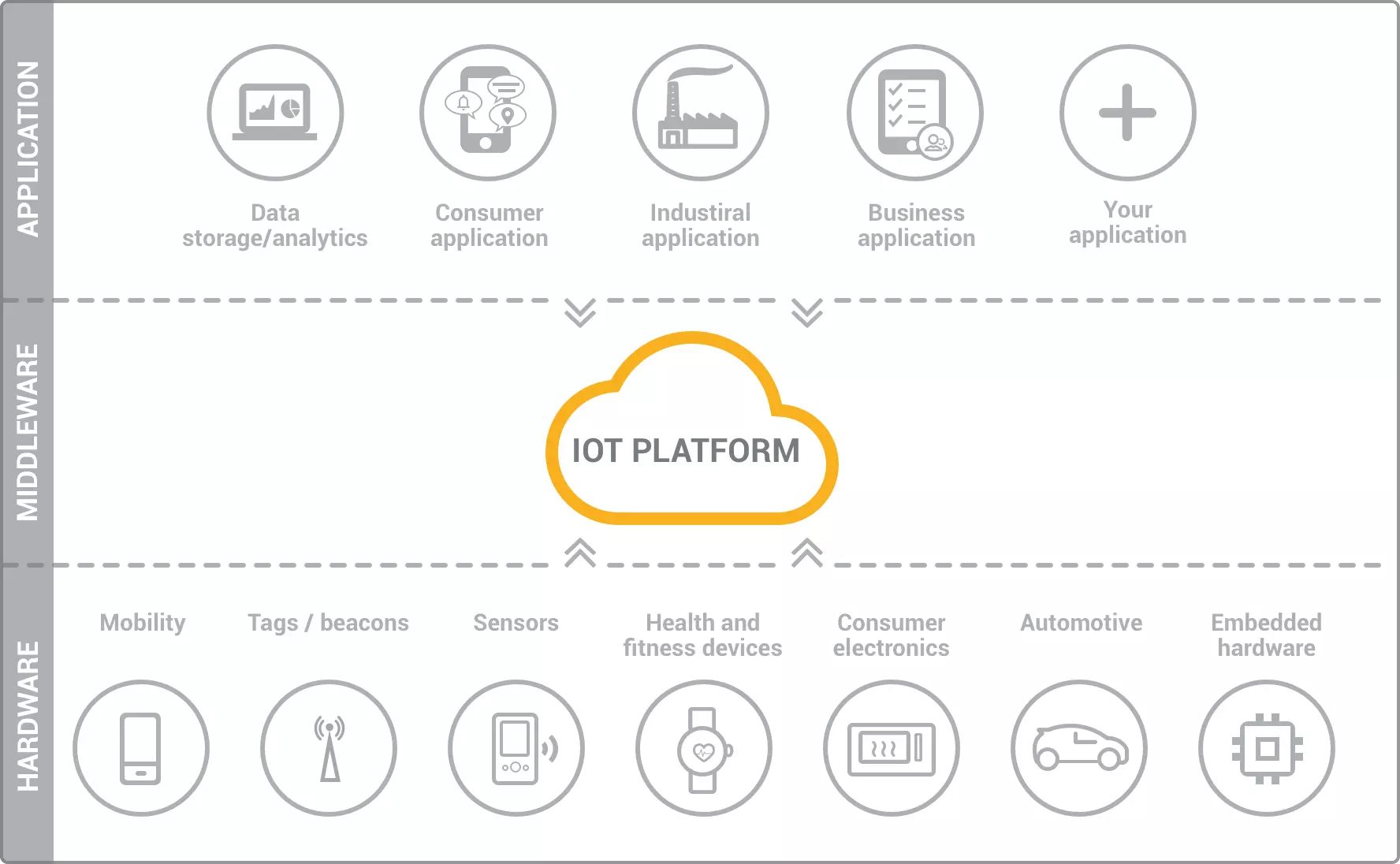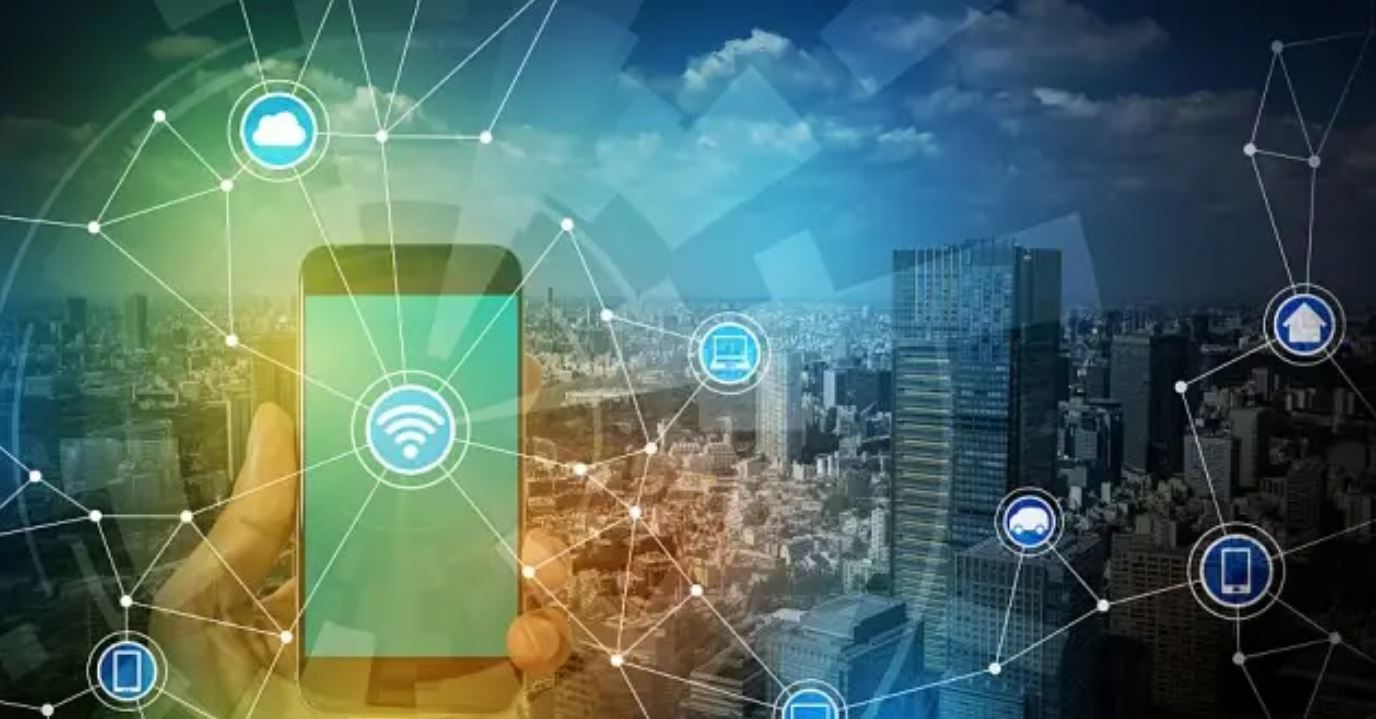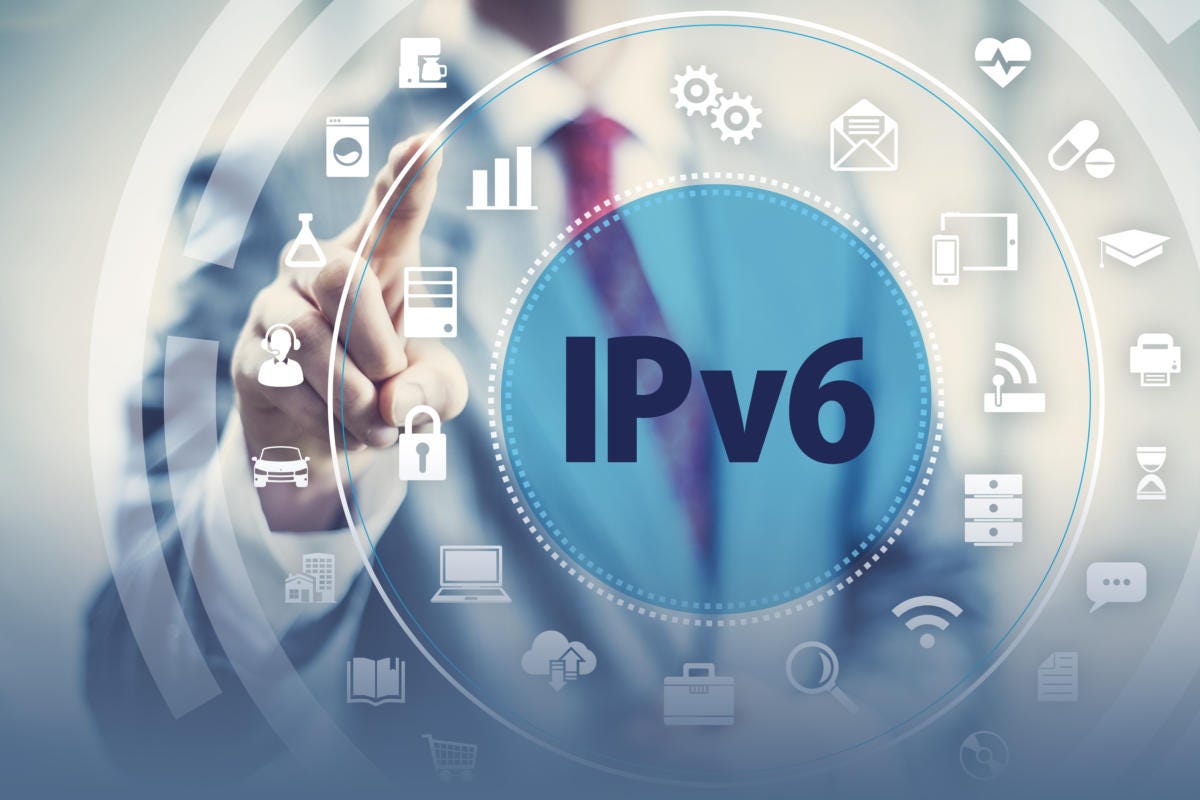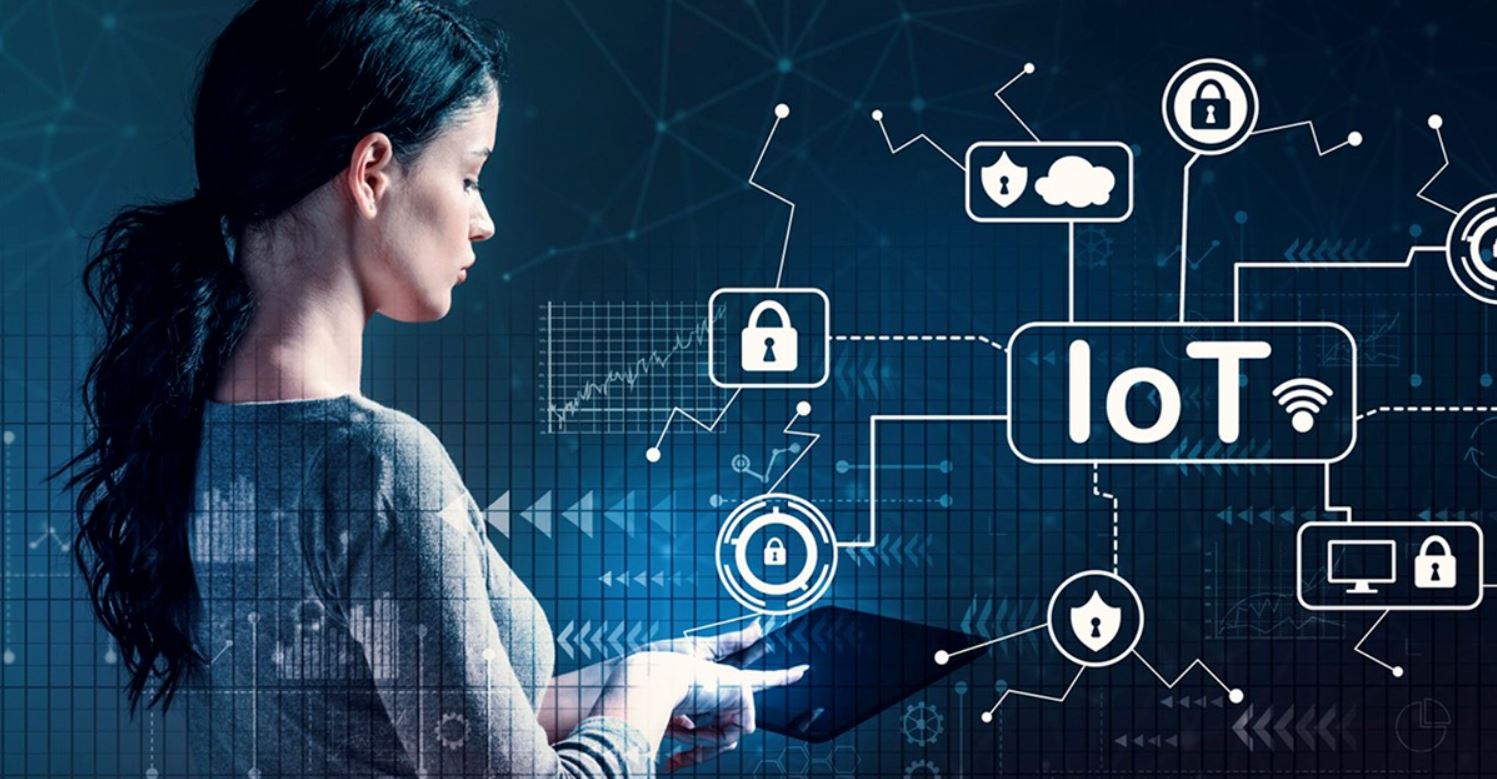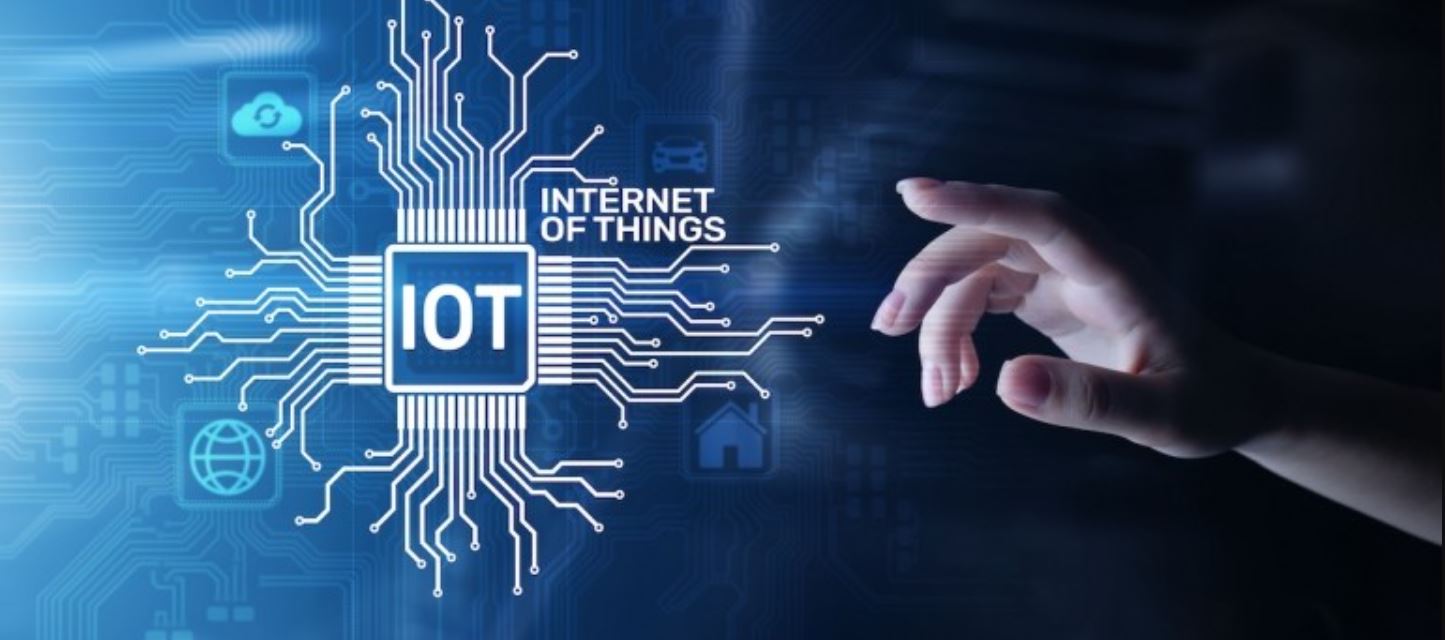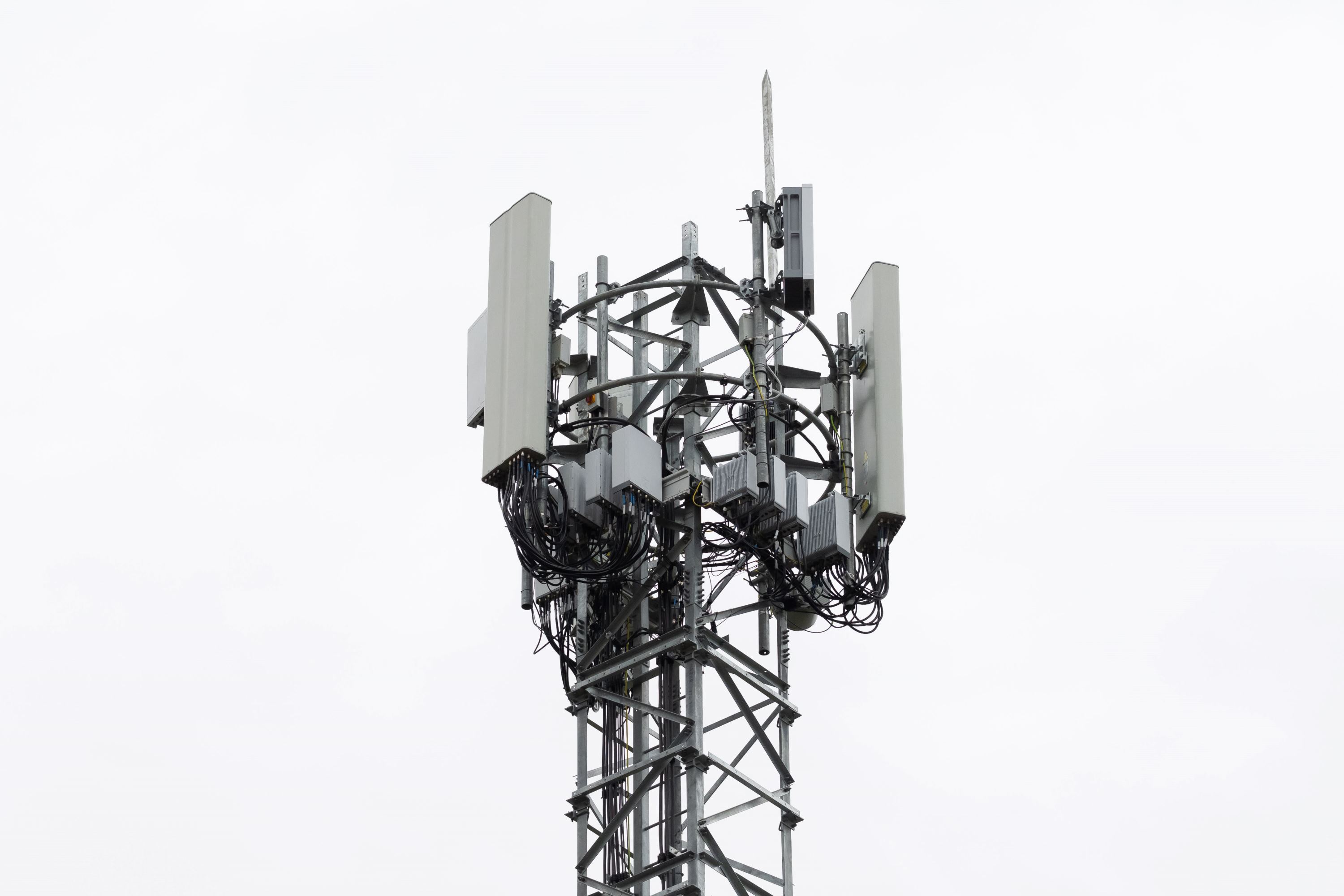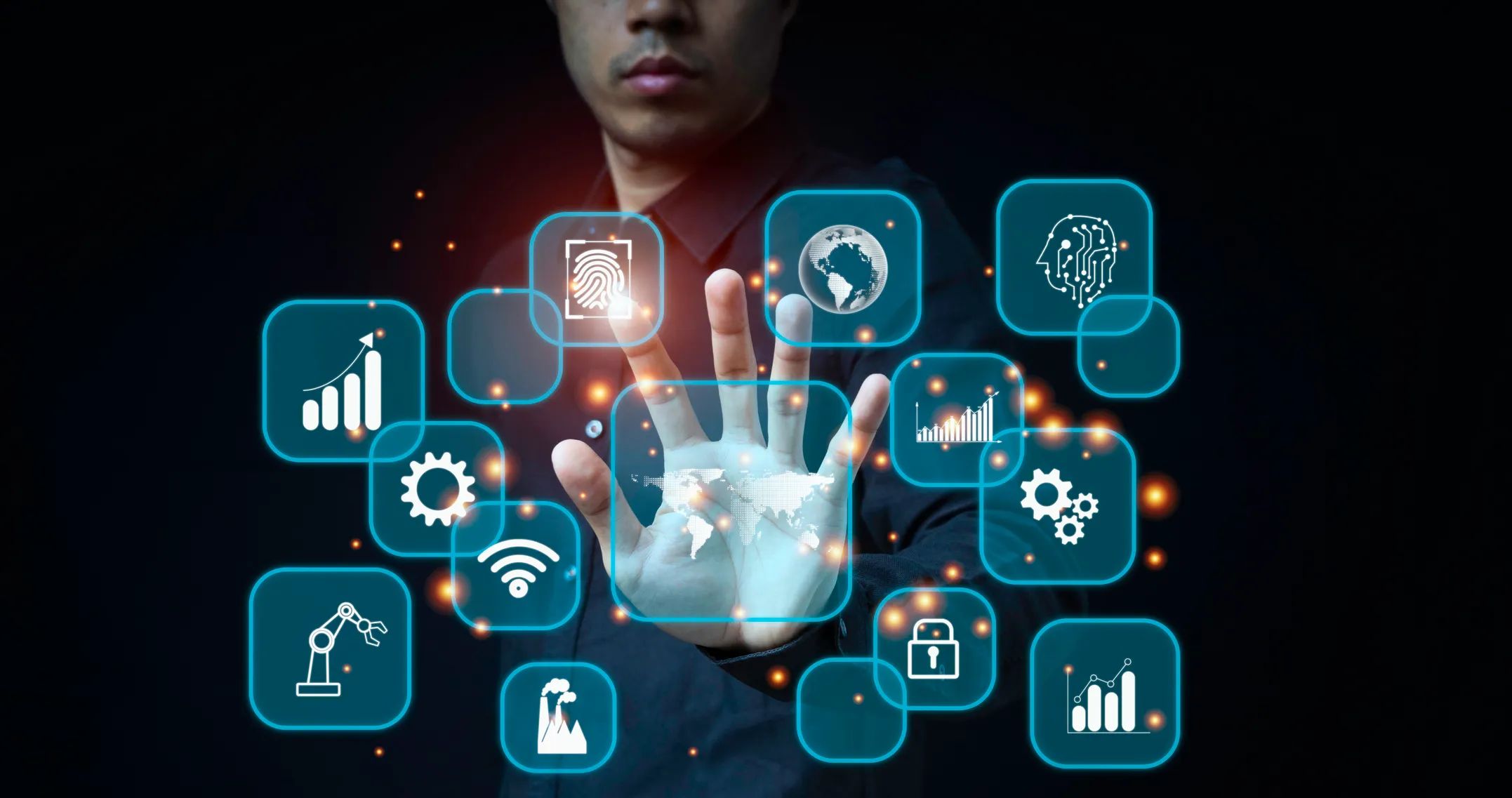Introduction
The Internet of Things (IoT) has revolutionized the way we interact with technology and the world around us. With the increasing number of devices connected to the internet, we are now living in an era where everyday objects are becoming “smart” and capable of communicating with each other. From household appliances and wearable devices to industrial machinery and infrastructure systems, IoT technology is rapidly transforming various aspects of our lives.
At its core, IoT refers to the network of physical devices embedded with sensors, software, and connectivity that enables them to collect and exchange data. These devices can range from simple objects like thermostats and smartwatches to complex machinery used in factories and transportation systems. The data collected by these devices can be analyzed and used to make informed decisions, automate processes, and improve efficiency.
The concept of IoT is based on the idea that by connecting devices and enabling them to communicate, we can enhance our ability to monitor, control, and optimize various systems. For example, a smart thermostat can adjust the temperature in your home based on your preferences and weather conditions. A smart city infrastructure can monitor traffic patterns and adjust traffic signals in real-time to alleviate congestion. These are just a few examples of how IoT is transforming different industries and sectors.
The benefits of IoT are vast and have the potential to impact various aspects of our lives. From improving efficiency and productivity to enhancing safety and security, IoT is reshaping the way we live and work. However, along with its advantages, IoT also brings its fair share of challenges. Ensuring data privacy and security, managing the complexity of IoT systems, addressing compatibility and interoperability issues, and overcoming connectivity and network challenges are some of the key hurdles that need to be overcome.
In this article, we will explore the importance of IoT, how it works, the benefits it brings, and the challenges it faces. By understanding the significance of IoT and its potential impact, we can better navigate the ever-evolving landscape of connected devices and make the most out of this transformative technology.
Definition of IoT
The Internet of Things (IoT) refers to the network of physical objects, devices, vehicles, and other items that are embedded with sensors, software, and connectivity, enabling them to collect and exchange data over the internet. These objects can range from everyday household items like refrigerators and thermostats to industrial machinery and infrastructure systems such as smart cities and smart grids.
The key characteristic of IoT is the ability of these objects to connect and communicate with each other and with humans, creating a network of interconnected devices. This allows for the seamless exchange of information and the integration of physical and digital systems, leading to increased efficiency, automation, and improved decision-making.
IoT devices are equipped with sensors that can measure different physical attributes such as temperature, humidity, motion, light, and more. These sensors collect real-time data from the environment and transmit it to a central system or the cloud, where it can be processed, analyzed, and used to trigger actions or provide insights.
The data collected by IoT devices can be used in numerous ways. It can be used for monitoring and control purposes, such as tracking the energy consumption of a building or monitoring the health of industrial machinery. The data can also be analyzed to identify patterns, trends, and anomalies, enabling predictive maintenance, optimizing processes, and making informed decisions.
Furthermore, IoT devices can be equipped with actuators, which allow them to take action based on the data received. For example, a smart thermostat can use the temperature data collected to adjust the cooling or heating of a room automatically.
Overall, IoT is about creating a network of connected objects that can collect, exchange, and utilize data to improve efficiency, enhance productivity, and create new levels of convenience and innovation in various domains.
How IoT Works
The Internet of Things (IoT) works by connecting various objects and devices through the use of sensors, software, and internet connectivity. These interconnected devices collect, transmit, and receive data, allowing for seamless communication and interaction between the physical and digital worlds.
At the core of IoT are the physical devices that are embedded with sensors and actuators. These devices can range from everyday objects like smartphones, wearable devices, and home appliances to complex industrial machinery and infrastructure systems. The sensors in these devices collect data from the environment or from other connected devices.
Once the data is collected, it is transmitted to a central system or the cloud. This can be done through various connectivity options, such as Wi-Fi, Bluetooth, cellular networks, or dedicated IoT networks like LoRaWAN or Sigfox. The data is then processed and analyzed, often in real-time, using advanced algorithms and data analytics techniques.
Based on the analysis, the IoT system can trigger actions or provide insights. For example, a smart home system can adjust the lighting and temperature based on occupancy and room preferences. In industrial settings, IoT devices can monitor the performance of machines and automatically initiate maintenance requests when necessary, minimizing downtime and optimizing productivity.
Security is a crucial aspect of IoT. Since IoT devices collect and transmit sensitive data, measures must be taken to ensure the confidentiality, integrity, and authenticity of the data. This includes securing the communication channels, implementing encryption protocols, and regularly updating software and firmware to patch vulnerabilities.
The scalability and interoperability of IoT systems are also important considerations. IoT networks must be capable of accommodating a large number of devices and handling the massive influx of data. Standardization efforts are underway to ensure that different IoT devices and platforms can work together seamlessly, enabling interoperability and avoiding vendor lock-in.
Overall, IoT works by leveraging the power of connectivity and data exchange to create smart and interconnected systems. By harnessing the capabilities of IoT, organizations and individuals can unlock new levels of efficiency, productivity, and innovation across various industries and domains.
Benefits of IoT
The Internet of Things (IoT) offers a wide range of benefits that impact various aspects of our lives. From improving efficiency and productivity to enhancing safety and security, IoT has the potential to revolutionize the way we live and work. Here are some of the key benefits of IoT:
Enhancing Efficiency and Productivity: IoT technology enables automation and optimization of processes, resulting in increased efficiency and productivity. Connected devices can gather real-time data, analyze it, and make informed decisions or take actions accordingly. This can lead to reduced wastage, streamlined operations, and improved resource management.
Improving Safety and Security: IoT devices can enhance safety and security in various domains. For instance, in smart homes, connected surveillance cameras and sensors can detect and alert homeowners to potential threats. In industrial settings, IoT systems can monitor and analyze data from machinery to detect anomalies or potential hazards, preventing accidents and ensuring worker safety.
Enhancing Customer Experience: IoT technology allows businesses to provide personalized and seamless experiences to customers. For example, in retail, IoT devices can track customer behavior and preferences, enabling targeted promotions and customized recommendations. IoT can also enable smart home systems that adjust temperature, lighting, and other settings based on occupant preferences, enhancing comfort and convenience.
Creating New Business Opportunities: IoT opens up new avenues for innovation and revenue generation. By connecting objects and collecting data, businesses can gain valuable insights into customer behavior, market trends, and product performance. This information can be used to develop new products, optimize existing offerings, and identify new market opportunities.
Enhancing Data Collection and Analysis: IoT devices generate vast amounts of data, providing valuable insights into various processes. This data can be collected, analyzed, and used to make data-driven decisions, improve processes, and discover patterns or trends that were previously unclear. By harnessing the power of IoT-generated data, organizations can gain a competitive edge and drive innovation.
These benefits highlight the transformative power of IoT and its potential to revolutionize industries and sectors. By leveraging the capabilities of IoT, businesses and individuals can unlock new opportunities, improve efficiency, enhance safety, and create innovative solutions that can address the challenges of the modern world.
Enhancing Efficiency and Productivity
One of the key benefits of the Internet of Things (IoT) is its ability to enhance efficiency and productivity in various industries and sectors. By connecting devices and leveraging real-time data, IoT technology enables automation, optimization, and improved resource management. Here are some ways in which IoT enhances efficiency and productivity:
Automated Processes: IoT enables the automation of manual tasks and processes, reducing the need for human intervention. For example, in manufacturing, IoT devices can monitor and control production lines, adjusting settings and detecting faults in real-time. This reduces errors, speeds up production, and minimizes downtime, ultimately improving overall efficiency.
Real-Time Data Analytics: IoT devices collect vast amounts of data from sensors and other sources. This data can be analyzed in real time, providing valuable insights into operations, performance, and customer behavior. By leveraging real-time analytics, businesses can make informed decisions quickly, optimize processes, and identify areas for improvement.
Optimized Resource Management: IoT technology enables better resource management by providing organizations with accurate, real-time data on resource usage. For example, in energy management, IoT devices can monitor and analyze energy consumption patterns in buildings, allowing for proactive energy-saving measures. This not only reduces costs but also minimizes environmental impact.
Proactive Maintenance: IoT devices can monitor the health and performance of machinery and equipment in real time. By collecting data on factors such as temperature, vibration, and usage patterns, IoT systems can identify potential issues before they escalate into major problems. This enables organizations to perform proactive maintenance, minimizing unplanned downtime and optimizing equipment lifespan.
Streamlined Supply Chain: IoT connectivity allows for better visibility and transparency across the supply chain. From tracking goods in transit to monitoring inventory levels and demand, IoT devices provide real-time insights into various stages of the supply chain. This helps organizations optimize inventory levels, improve logistics, and meet customer demands more efficiently.
Remote Monitoring and Control: IoT devices enable remote monitoring and control of various processes, assets, and systems. This is particularly beneficial in industries such as agriculture and healthcare. For instance, in agriculture, IoT sensors can monitor soil moisture levels and weather conditions, allowing farmers to remotely control irrigation systems and optimize crop yields. In healthcare, IoT devices can monitor patients’ vital signs remotely, enabling timely interventions and reducing hospital visits.
By enhancing efficiency and productivity, IoT technology empowers organizations to improve operations, reduce costs, and deliver better products and services. The ability to automate processes, analyze real-time data, optimize resource management, and streamline supply chains makes IoT a transformative force in today’s rapidly evolving business landscape.
Improving Safety and Security
The Internet of Things (IoT) has a significant impact on improving safety and security in various domains, ranging from homes and workplaces to industrial settings and cities. By connecting devices, collecting data, and enabling real-time monitoring and control, IoT technology enhances safety measures and mitigates potential risks. Here are some ways in which IoT improves safety and security:
Smart Security Systems: IoT devices, such as surveillance cameras, motion sensors, and door/window sensors, enable homeowners and businesses to implement advanced security systems. These devices can be monitored remotely, providing real-time alerts and notifications in the event of any unusual activities or breaches. By integrating these devices with a central monitoring system, security personnel can respond promptly to potential threats.
Industrial Safety: In industrial settings, IoT plays a crucial role in ensuring worker safety and preventing accidents. IoT devices can monitor various environmental and operational parameters, such as temperature, gas levels, and equipment performance. Real-time data analysis and predictive analytics enable proactive maintenance, hazard detection, and timely alerts to prevent potential accidents or system failures.
Emergency Response: IoT technology provides valuable support in emergency response scenarios. For instance, wearable devices equipped with sensors can detect falls or changes in vital signs, triggering immediate assistance. Smart buildings equipped with IoT devices can detect and quickly respond to emergencies, such as fires or gas leaks, by activating sprinkler systems, ventilation, or emergency lighting.
Traffic Management and Public Safety: IoT-powered smart city systems significantly improve traffic management and public safety. Connected sensors and cameras detect traffic congestion, accidents, or suspicious activities in real-time, allowing for quick intervention and enabling authorities to take necessary actions promptly. This enhances the overall safety and security of citizens and improves emergency response times.
Asset Tracking: IoT technology enables efficient tracking of valuable assets, such as vehicles, equipment, or inventory. GPS-enabled IoT devices provide real-time location data, helping organizations monitor their assets and prevent theft or loss. Additionally, IoT-based asset tracking systems enable organizations to optimize logistics, streamline supply chains, and reduce operational costs.
Data Security: While IoT offers numerous benefits, it also poses security challenges. Protecting the privacy and security of IoT devices and the data they collect is a critical aspect of ensuring safety. Implementing robust security measures, including encryption, authentication protocols, and regular software updates, helps safeguard against potential cyber threats and unauthorized access to sensitive information.
By leveraging the power of IoT, organizations and individuals can significantly enhance safety and security measures in various domains. From smart homes and office buildings to industrial sites and smart cities, IoT technology provides real-time monitoring, quick response capabilities, and data-driven insights, enabling a safer and more secure environment for everyone.
Enhancing Customer Experience
The Internet of Things (IoT) has a profound impact on improving and enhancing the customer experience across various industries. By connecting devices and leveraging data, IoT technology enables companies to personalize their offerings, provide seamless interactions, and deliver exceptional levels of convenience and satisfaction. Here are some ways in which IoT enhances the customer experience:
Personalized Recommendations: IoT devices, like smart speakers and wearable devices, collect data on customer preferences, behaviors, and habits. This data can be analyzed to provide personalized recommendations for products and services. For example, streaming services can use IoT data to recommend movies or music based on a user’s viewing or listening history.
Smart Home Automation: IoT technology transforms homes into smart living spaces, providing users with seamless control over various aspects of their environment. From adjusting temperature and lighting to controlling home security systems and appliances, IoT enables customers to personalize and automate their living spaces, enhancing convenience and comfort while saving energy.
Connected Retail Experience: IoT devices enhance the retail experience by personalizing interactions and improving convenience. For instance, smart shelves equipped with sensors can detect when a product is running low and automatically place an order to replenish stock. IoT-enabled beacons can also send personalized offers or discounts to customers’ smartphones while they are in-store.
Improved Healthcare Services: IoT devices and wearables have revolutionized the healthcare industry, enabling remote patient monitoring and personalized healthcare services. Patients can use IoT devices to track their vital signs and transmit the data to healthcare providers, allowing for proactive interventions and personalized treatment plans. This enhances convenience, reduces the need for frequent hospital visits, and improves patient outcomes.
Enhanced Travel Experience: IoT devices and services enhance the travel experience by providing real-time information and personalized services. For example, airports equipped with IoT technology can offer automated check-in processes, real-time flight updates, and smart luggage tracking. Hotels can provide personalized room settings and experiences based on guest preferences.
Seamless Integration of Services: IoT enables the integration of various services, creating a seamless and cohesive experience for customers. For example, a smart car equipped with IoT technology can integrate with a smart home system, automatically adjusting the home’s temperature, lighting, and security upon arrival. This integration enhances convenience and simplifies everyday tasks.
Overall, IoT technology enhances the customer experience by offering personalized, convenient, and seamless interactions. By leveraging data and connectivity, companies can optimize their offerings, tailor their services to individual preferences, and create innovative solutions that meet the evolving needs and expectations of customers. In this way, IoT plays a crucial role in transforming customer experiences across industries.
Creating New Business Opportunities
The Internet of Things (IoT) presents businesses with a wealth of new opportunities for innovation, revenue generation, and market expansion. By connecting devices and leveraging real-time data, IoT technology enables companies to create new products and services, optimize operations, and tap into new market segments. Here are some ways in which IoT creates new business opportunities:
Data-Driven Insights: IoT devices generate a vast amount of data that can be collected, analyzed, and used to uncover valuable insights. Companies can leverage this data to gain a deeper understanding of customer behavior, preferences, and market trends. This information can then be used to develop targeted marketing strategies, improve product offerings, and identify new business opportunities.
Product Innovation: IoT opens the door for innovative product development and enhancements. By embedding sensors, connectivity, and intelligence into products, companies can create “smart” devices that offer enhanced functionality and connectivity. For example, IoT-enabled home security systems can provide remote monitoring, automation, and integration with other smart devices.
Optimized Operations: IoT technology allows businesses to streamline operations and improve efficiency. For instance, in manufacturing, IoT-powered sensors can monitor and track the performance of equipment in real-time, enabling predictive maintenance and minimizing downtime. This leads to cost savings, increased productivity, and improved overall performance.
Smart City Solutions: IoT presents significant opportunities for businesses to contribute to the development of smart cities. From intelligent transportation systems and energy management solutions to waste management and public safety initiatives, companies can leverage IoT to create innovative solutions that improve sustainability, resource management, and quality of life in urban areas.
Subscription-Based Business Models: IoT enables the shift from product-centric to service-oriented business models. Through IoT-enabled devices, companies can offer subscription-based services to customers. For instance, instead of selling a product outright, companies can provide ongoing monitoring, maintenance, and upgrades as part of a subscription package.
Enhanced Customer Engagement: IoT technology enables businesses to engage with customers in new and meaningful ways. For example, IoT devices can provide personalized recommendations, notifications, and updates to customers based on their preferences and behaviors. This fosters a closer relationship with customers and enhances their overall experience and satisfaction.
New Market Segments: IoT opens up opportunities for businesses to tap into new market segments and industries. For instance, IoT technology is being increasingly adopted in healthcare, agriculture, transportation, and logistics sectors. Companies that can offer IoT solutions tailored to these industries can gain a competitive advantage and access new revenue streams.
Overall, IoT creates numerous new business opportunities by enabling data-driven insights, product innovation, operational optimization, and the development of smart solutions. By embracing IoT technology and leveraging its potential, businesses can stay ahead of the curve, drive innovation, and capitalize on the transformative power of the connected world.
Enhancing Data Collection and Analysis
The Internet of Things (IoT) revolutionizes data collection and analysis by connecting devices and enabling real-time data exchange. IoT technology enhances the quantity, quality, and speed of data collection, providing businesses with valuable insights and enabling them to make data-driven decisions. Here are some ways in which IoT enhances data collection and analysis:
Real-Time Data: IoT devices collect and transmit data in real-time, providing up-to-date information on various parameters. This allows businesses to monitor processes, track performance, and respond quickly to changing conditions. Real-time data enables prompt decision-making, proactive actions, and reduces reliance on historical or outdated information.
Automation: IoT devices automate data collection processes, reducing manual effort and human errors. Sensors embedded in IoT devices can collect data without human intervention, ensuring consistency and accuracy. This automation enables continuous data collection, even in high-frequency or high-volume scenarios, providing a comprehensive and detailed picture of operations.
Variety of Data Sources: IoT devices can collect data from a wide variety of sources and sensors. This includes environmental data, customer behavior data, machine performance data, and more. By leveraging data from multiple sources, businesses can gain a holistic understanding of their operations and customers, identifying patterns and trends that were previously inaccessible.
Large-Scale Data: IoT generates massive amounts of data due to the multitude of connected devices and sensors. This large-scale data provides businesses with unprecedented opportunities for analysis and insights. Advanced analytics techniques, such as machine learning and artificial intelligence, can be applied to IoT-generated data to uncover hidden patterns, correlations, and predictions.
Improved Accuracy and Precision: IoT devices capture data directly from the source, eliminating manual data entry and potential human errors. This results in improved accuracy and precision in data collection and analysis, leading to more reliable insights and informed decision-making.
Contextual Insights: IoT data collection is contextual, capturing information about the surroundings, environment, and conditions in which the data is generated. This contextual data provides valuable insights into the factors that influence the collected information. For instance, temperature or humidity data collected by IoT sensors can be analyzed alongside other environmental factors, allowing businesses to identify correlations or causations that contribute to certain outcomes.
Predictive Analytics: IoT-generated data can be leveraged for predictive analytics purposes. By analyzing historical and real-time data, businesses can identify patterns, trends, and anomalies and make predictions about future events. This enables proactive decision-making, early warning systems, and predictive maintenance, optimizing operations and reducing costs.
Overall, IoT enhances data collection and analysis by providing real-time data, automating processes, enabling large-scale data collection, and improving the accuracy and precision of insights. By leveraging IoT-generated data, businesses can gain a competitive edge, make informed decisions, and drive innovation in today’s data-driven world.
Challenges of IoT
While the Internet of Things (IoT) offers numerous benefits, it also presents several challenges that need to be addressed for its widespread adoption and successful implementation. These challenges include ensuring data privacy and security, managing the complexity of IoT systems, addressing compatibility and interoperability issues, and overcoming connectivity and network challenges. Here are some of the key challenges of IoT:
Ensuring Data Privacy and Security: IoT devices collect and transmit vast amounts of data, often including sensitive and personal information. Ensuring the privacy and security of this data is a significant challenge. IoT systems must implement robust security measures, including encryption, authentication, and access controls, to protect against unauthorized access, data breaches, and cyber threats.
Managing the Complexity of IoT Systems: IoT systems can be complex, involving a multitude of devices, sensors, protocols, and platforms. Managing and integrating these components can be challenging, requiring expertise in areas such as networking, cloud computing, data analytics, and software development. Organizations need to invest in resources and skills to effectively manage the complexity of IoT systems.
Addressing Compatibility and Interoperability Issues: IoT devices and platforms come from different manufacturers and may use different communication protocols and standards. This fragmentation creates compatibility and interoperability issues, making it difficult for devices to seamlessly communicate and work together. Standardization efforts are needed to ensure interoperability and avoid vendor lock-in.
Overcoming Connectivity and Network Challenges: IoT relies on reliable connectivity to transmit data between devices and to the cloud. However, connectivity can be a challenge in certain areas or environments where network coverage is limited or unreliable. Connectivity solutions, such as Wi-Fi, cellular networks, or dedicated IoT networks, need to be carefully chosen and deployed to ensure consistent and robust connectivity.
Scalability and Data Management: As more IoT devices are deployed, the amount of data generated increases exponentially. Managing and analyzing this massive volume of data in a timely manner can be a challenge. Scalable data storage and processing solutions, such as cloud computing and edge computing, along with advanced analytics techniques, are necessary to handle the scale and velocity of IoT-generated data.
Energy Efficiency: IoT devices often operate on limited power sources, such as batteries. Optimizing energy consumption is crucial to ensure the longevity and reliability of IoT devices. This requires the development of efficient hardware and software solutions, as well as strategies to manage power usage and enable energy harvesting technologies.
Ethical and Legal Considerations: IoT raises ethical and legal considerations regarding data ownership, consent, and privacy. Organizations need to be transparent about the data being collected, obtain informed consent, and adhere to relevant data protection laws and regulations. It is crucial to establish clear ethical guidelines and robust governance frameworks to address these considerations.
Solving these challenges requires collaboration among industry stakeholders, including manufacturers, technology providers, policymakers, and regulators. By addressing these challenges, we can unlock the full potential of IoT and ensure its secure, reliable, and ethical implementation to drive innovation and improve our lives.
Ensuring Data Privacy and Security
Ensuring data privacy and security is a critical challenge in the implementation of the Internet of Things (IoT). The vast amount of data collected and transmitted by IoT devices poses significant risks if not properly managed. Protecting the privacy and security of this data is crucial to maintain user trust and the integrity of IoT systems. Here are some key considerations for ensuring data privacy and security in IoT:
Strong Authentication and Access Controls: IoT systems should implement strong authentication mechanisms to ensure that only authorized individuals or devices can access and interact with the data. This includes mechanisms such as secure logins, two-factor authentication, and the principle of least privilege, where access is granted only on a need-to-know basis.
Secure Communication: IoT devices should use secure communication protocols, such as SSL/TLS, to encrypt data transmitted over networks. This prevents unauthorized interception and ensures the confidentiality and integrity of the data. Additionally, the integrity of the devices themselves should be verified to prevent tampering or unauthorized modifications.
Data Encryption: Data collected by IoT devices should be encrypted at rest and in transit. Encryption protects the data from unauthorized access even if it is intercepted or accessed through physical means. Strong encryption algorithms and key management practices should be employed to safeguard the data and prevent unauthorized decryption.
Data Minimization: IoT systems should follow the principle of data minimization, collecting only the data necessary for the intended purpose. Collecting excessive data increases the potential risk and exposure in case of a data breach. Data should be anonymized or pseudonymized whenever possible to further protect privacy.
Secure Firmware and Software Updates: IoT devices should have mechanisms in place to receive and apply regular firmware and software updates. These updates often include security patches to address vulnerabilities. Regular updates ensure that devices stay protected against newly discovered threats and maintain a strong security posture.
Vulnerability Management: Organizations should have effective vulnerability management processes to identify and address security weaknesses in their IoT devices and systems. This includes conducting regular security assessments, penetration testing, and monitoring for new vulnerabilities. Patching known vulnerabilities promptly is crucial to prevent exploitation by malicious actors.
User Awareness and Education: Users should be educated about the privacy and security risks associated with IoT devices. They should be made aware of best practices, such as creating strong passwords, updating firmware, and avoiding insecure networks. User awareness campaigns can help ensure responsible usage and protect against social engineering attacks.
Regulatory Compliance: Organizations must adhere to relevant data protection and privacy regulations, such as the General Data Protection Regulation (GDPR) and industry-specific regulations. Compliance with these regulations helps protect user privacy and fosters a culture of accountability and responsibility in handling IoT data.
Ensuring data privacy and security in IoT is an ongoing process that requires a multi-layered approach. It involves addressing vulnerabilities, implementing strong security measures, educating users, and staying abreast of emerging threats. By prioritizing data privacy and security, IoT can be used responsibly to drive innovation and unlock the potential of connected devices and applications.
Managing the Complexity of IoT Systems
The Internet of Things (IoT) presents unique challenges in terms of managing the complexity of interconnected devices, networks, and platforms. IoT systems involve a multitude of devices, sensors, protocols, and data flows, making their management increasingly complex. Effectively managing this complexity is crucial for the successful implementation and operation of IoT systems. Here are some key strategies for managing the complexity of IoT systems:
Planning and Architecture: A well-defined plan and architecture are essential to manage the complexity of IoT systems. This involves designing an efficient framework that clearly defines the roles, responsibilities, and interactions of each component. Understanding the dependencies and relationships between devices, networks, and platforms helps in identifying potential bottlenecks and streamlining workflows.
Integrated Device Management: Implementing a robust device management strategy is crucial for managing the complexity of IoT systems. This includes tasks such as device provisioning, configuration, monitoring, and firmware/software updates. Centralized device management platforms can provide a unified view of all connected devices, enabling efficient control and maintenance.
Compatibility and Interoperability: IoT devices often originate from different manufacturers and may use different communication protocols and standards. Ensuring compatibility and interoperability between devices and platforms is essential to manage complexity. Standards and frameworks, such as IoT interoperability frameworks, can help facilitate seamless integration and interaction between different IoT components.
Data Management and Analytics: Effective data management and analytics are essential to handle the massive volume of data generated by IoT systems. Implementing data governance practices, such as data quality assurance, data integration, and data lifecycle management, helps in organizing, analyzing, and extracting value from the IoT data. Employing advanced analytics techniques, such as machine learning and artificial intelligence, enables businesses to gain meaningful insights from the data generated by IoT devices.
Network Infrastructure: A reliable and scalable network infrastructure is crucial for managing the complexity of IoT systems. IoT systems often require low-latency, high-bandwidth connections to transmit data in real-time. Organizations should ensure a robust and secure network architecture that can handle the increasing traffic and the unique demands of IoT device communication.
Edge Computing: Leveraging edge computing can help manage complexity by processing data closer to where it is generated. Edge devices can perform data preprocessing, filtering, and analysis locally, reducing the amount of data transferred to the cloud and alleviating network congestion. This distributed computing approach improves responsiveness, scalability, and efficiency, especially in scenarios where real-time processing is critical.
Training and Skills Development: Building and nurturing a skilled workforce capable of managing complex IoT systems is essential. Providing training and development opportunities to employees helps them understand the intricacies of IoT technology, gain expertise in related fields like networking and data analytics, and align their skills with the evolving demands of IoT systems.
Partnerships and Collaboration: Collaboration with industry partners, technology providers, and subject matter experts can help manage the complexity of IoT systems. By working together, organizations can pool resources, share best practices, and address challenges collectively. Collaborative efforts also facilitate knowledge sharing, innovation, and the development of industry standards.
Managing the complexity of IoT systems requires careful planning, effective device management, ensuring compatibility and interoperability, implementing robust data management and analytics processes, and leveraging edge computing. Investing in a skilled workforce, fostering partnerships, and embracing collaborative approaches are also key to successfully navigating the complex landscape of IoT systems.
Addressing Compatibility and Interoperability Issues
One of the significant challenges in the implementation of the Internet of Things (IoT) is addressing compatibility and interoperability issues. As IoT devices come from different manufacturers and use various communication protocols and standards, ensuring seamless communication and integration between devices is crucial for the success of IoT systems. Addressing compatibility and interoperability issues requires collaborative efforts and standardization. Here are some key strategies to tackle these challenges:
Developing Standards and Protocols: Establishing common standards and protocols is crucial for ensuring compatibility and interoperability in IoT systems. Industry-wide collaboration, involving manufacturers, technology providers, and regulatory bodies, is necessary to develop and promote open standards. Adopting widely accepted protocols, such as MQTT, CoAP, or OPC-UA, enables devices to communicate and interact with each other seamlessly.
Implementing Interoperability Frameworks: Interoperability frameworks provide guidelines and best practices for integrating different IoT components. These frameworks define a set of protocols, data formats, and communication patterns that facilitate interoperability. Organizations can follow these frameworks to ensure compatibility and streamline the integration process.
Device Certification Programs: Device certification programs can help ensure that IoT devices adhere to compatibility standards. By certifying devices against established guidelines, manufacturers can demonstrate their commitment to compatibility and interoperability. Certification programs provide customers with assurance that certified devices will work seamlessly within their existing IoT infrastructure.
Encouraging Vendor Collaboration: Collaboration among IoT device manufacturers is essential for addressing compatibility and interoperability challenges. Vendors should actively engage in dialogue and share information to ensure their devices can communicate with other devices and platforms seamlessly. Collaborative efforts can lead to the development of joint standards, interoperability testing, and the creation of reference architectures that facilitate integration.
API and Middleware Solutions: Application Programming Interfaces (APIs) and middleware solutions can act as intermediaries, enabling communication between different devices and platforms. APIs provide standardized interfaces that allow devices to interact with each other. Middleware solutions can bridge the gap between devices using different protocols, translating data and facilitating interoperability.
Embracing IoT Platforms: IoT platforms provide a centralized infrastructure for managing and integrating IoT devices. These platforms often support multiple protocols and offer pre-built integrations with various devices. Leveraging IoT platforms can simplify the integration process and ensure compatibility among devices from different manufacturers.
Open Source Initiatives: Open-source projects and communities encourage collaboration and provide tools and frameworks that enhance compatibility and interoperability in IoT systems. Open-source projects like Eclipse IoT, IoTivity, and AllSeen Alliance promote cross-vendor collaboration, standardization, and the development of open-source implementations that facilitate integration and interoperability.
Evolving Regulations and Policies: Governments and regulatory bodies play a crucial role in promoting compatibility and interoperability in IoT. Encouraging the development of interoperability standards and guidelines, providing incentives for compliance, and implementing regulations that require interoperability can drive the adoption of compatible IoT devices and systems.
Addressing compatibility and interoperability issues in IoT systems requires industry-wide collaboration, adherence to standards, certification programs, and the adoption of interoperability frameworks. By working together and following established guidelines, organizations can overcome these challenges and unlock the full potential of the interconnected world.
Overcoming Connectivity and Network Challenges
Connectivity plays a vital role in the successful implementation of the Internet of Things (IoT). However, connectivity and network challenges can pose significant obstacles to the seamless operation of IoT systems. Addressing these challenges is crucial to ensure reliable and robust communication between IoT devices. Here are some key strategies to overcome connectivity and network challenges in IoT:
Choosing the Right Connectivity Technology: Different IoT use cases may require different connectivity technologies. It is essential to select the appropriate connectivity technology that suits the specific requirements of the application. The options include Wi-Fi, Bluetooth, cellular networks, low-power wide-area networks (LPWAN), satellite communication, or specialized IoT networks like LoRaWAN or NB-IoT.
Ensuring Sufficient Coverage: IoT devices require sufficient network coverage to transmit data reliably. Coverage challenges can arise in areas where existing network infrastructure is limited or unavailable. Organizations should assess the coverage of available networks, explore options for extending coverage, or identify suitable alternatives for reliable communication in those areas.
Network Scalability: As the number of connected devices increases, network scalability becomes critical. IoT systems may need to handle a large volume of data traffic generated by numerous devices. Organizations should select networks and protocols that can scale up to support the growing number of devices and the increased data transfer requirements.
Redundancy and Resilience: Building redundancy and resilience into IoT networks ensures continuous connectivity even in the face of failures or disruptions. Redundancy can be achieved through redundant connections, backup power supplies, or multiple network providers. It helps mitigate the impact of network outages and ensures uninterrupted data transmission and device communication.
Securing Network Infrastructure: Security is a critical aspect of network connectivity in IoT. Organizations must employ robust security measures to protect IoT networks from unauthorized access, data breaches, and cyber attacks. Implementing strong authentication protocols, encryption techniques, and regular security updates helps safeguard the network and IoT devices.
Edge Computing: Employing edge computing capabilities can alleviate network challenges by performing data processing and analysis closer to the source. Edge devices can process and filter data locally, reducing the amount of data that needs to be transmitted across the network. This reduces network congestion, lowers latency, and enhances overall system efficiency.
Quality of Service (QoS) Considerations: IoT applications, especially real-time or mission-critical deployments, may require specific quality of service parameters. Organizations should prioritize QoS considerations, such as low latency, high reliability, and data integrity, to ensure that the network can meet the requirements of the application and deliver a seamless user experience.
Collaboration with Network Providers: Working closely with network service providers can help address connectivity challenges. Engaging in discussions, understanding network capabilities, and exploring potential tailored solutions can enable organizations to leverage network provider expertise and resources to overcome connectivity hurdles.
Overcoming connectivity and network challenges in IoT requires careful consideration of the specific requirements of the application, selecting the right connectivity technology, ensuring coverage and scalability, enhancing network resilience and security, leveraging edge computing, and collaborating with network service providers. By implementing these strategies, organizations can ensure reliable connectivity and network performance, enabling the seamless operation of IoT systems.
Conclusion
The Internet of Things (IoT) is a transformative technology that has revolutionized the way we interact with the world around us. With its ability to connect devices, collect data, and enable real-time communication, IoT has opened up a world of possibilities and opportunities for businesses, industries, and individuals.
We have explored the importance of IoT, how it works, and the benefits it brings. IoT enhances efficiency and productivity by automating processes, optimizing resource management, and enabling real-time data analytics. It improves safety and security by providing advanced monitoring and control capabilities, enhancing emergency response, and facilitating proactive maintenance.
Furthermore, IoT enhances the customer experience by offering personalized recommendations, enabling smart home automation, and improving convenience across various industries. It creates new business opportunities by leveraging data-driven insights, driving product innovation, and enabling service-oriented business models.
However, IoT also poses unique challenges that need to be addressed. Ensuring data privacy and security, managing the complexity of IoT systems, addressing compatibility and interoperability issues, and overcoming connectivity and network challenges are crucial for the successful implementation of IoT.
To overcome these challenges, collaboration among industry stakeholders, adherence to standards and guidelines, and embracing emerging technologies and practices are necessary. Organizations should prioritize data privacy and security, invest in skills development, and foster partnerships to drive innovation and address industry-wide challenges.
In conclusion, the Internet of Things (IoT) holds tremendous potential to transform industries, improve efficiency, enhance safety and security, and create new opportunities. By embracing IoT and effectively tackling its challenges, organizations can unlock the full potential of this groundbreaking technology, delivering value, innovation, and a seamless connected experience for individuals and businesses alike.







